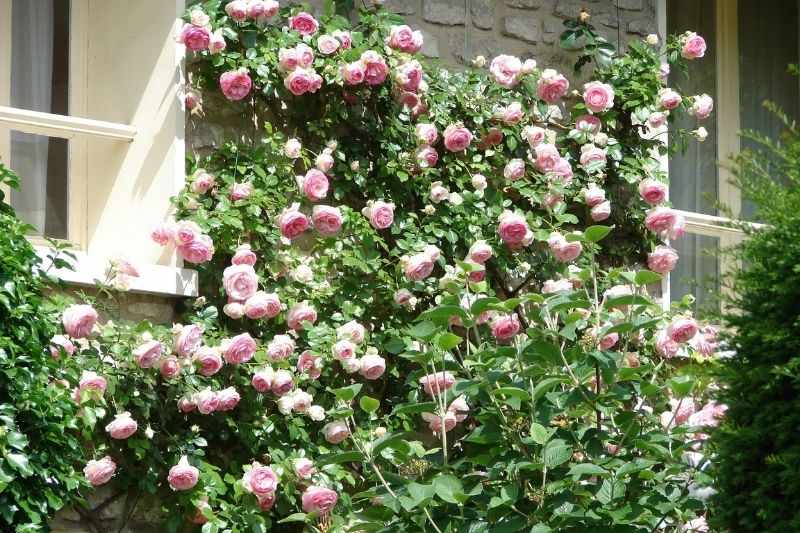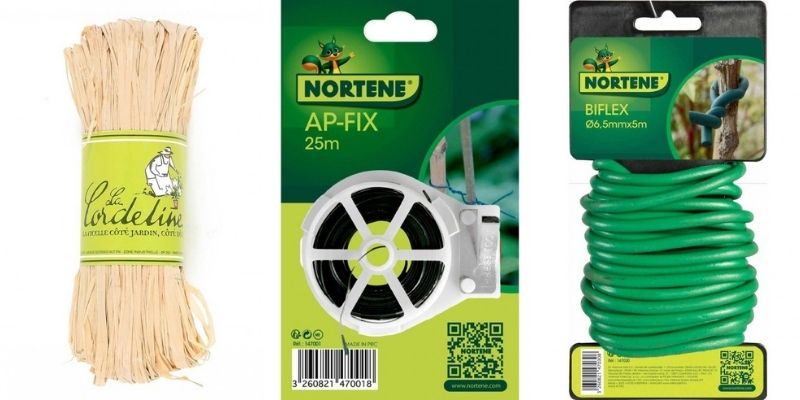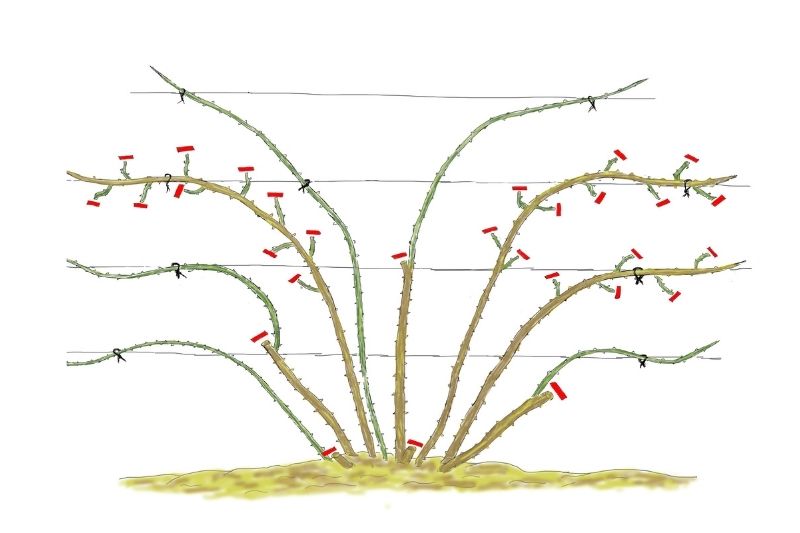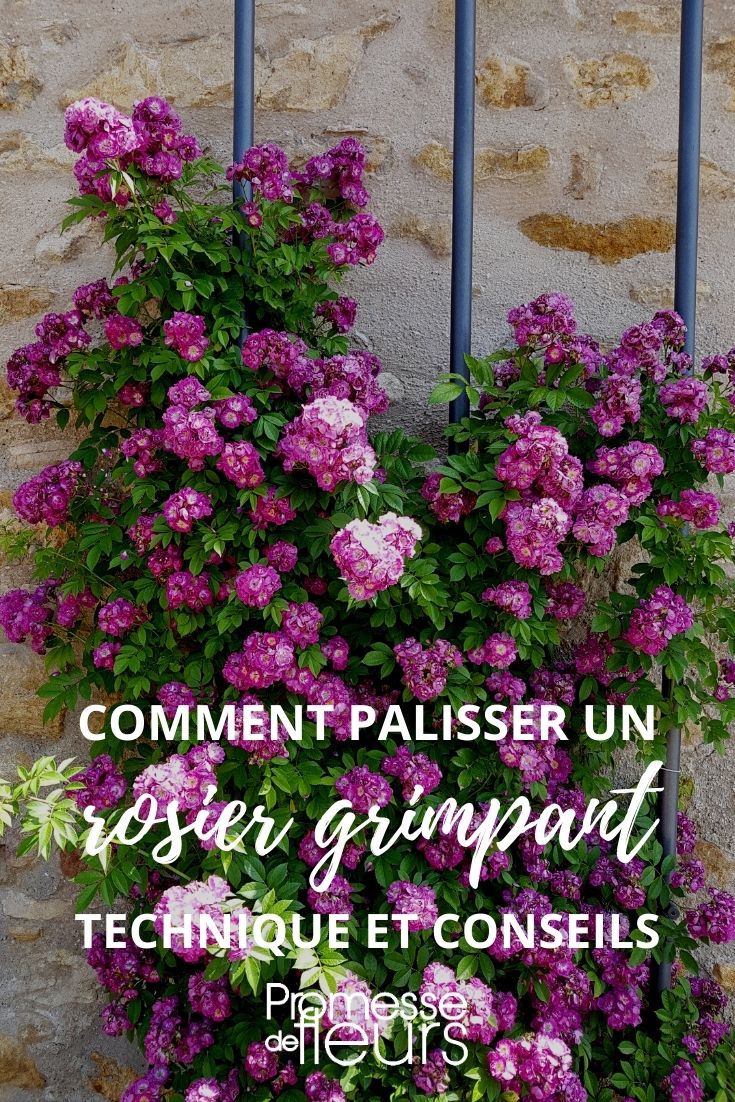Climbing roses do not cling to their support on their own, unlike ivy which has suction hairs to attach itself to a wall. This is why it is necessary to guide the climbing rose and direct its main branches, called "framework branches", in a harmonious manner. Additionally, bending the rose's branches horizontally encourages the appearance of new lateral shoots that will bear the flowers. This is the principle of "training".
Climbing roses can be trained on various supports: walls, posts, trees, pergolas, wooden structures (trellises, pyramids, arches, etc.). In this tutorial, we will explain how to train a climbing rose on a wall.

When to train a climbing rose on a wall?
Climbing roses should be trained:
- when planting the rose: you should then provide a firmly fixed attachment system. Indeed, climbing roses are large in size, so the support must be able to bear the weight of the plant when mature.
- when pruning the rose: repeat-flowering climbing roses, which bloom several times a year, should be pruned in late winter, while non-repeat-flowering roses, which bloom only once a year, should be pruned after flowering. For more information, check out our advice sheet on pruning climbing roses.
- during growth: if the rose is planted near a pathway, train any overly vigorous or trailing branches that may injure you or be obstructive.

Climbing rose trained against a façade
What materials should you use to tie a climbing rose?
Climbing roses can be trained on a wooden trellis fixed to a wall. However, the most common solution is to fix horizontal steel wires at regular intervals to attach the rose.
First, equip yourself with thick gloves and cover your arms (with a jumper or jacket) to protect yourself from the rose's thorns. On our site, you'll find long gloves that cover the forearms.
Here is the equipment you'll need to install the support:
- stainless steel wire,
- screw eyes with corresponding wall plugs,
- cable ties,
- turnbuckles with hooks,
- sealing paste,
- flexible ties with plastic or foam sleeves or raffia
- various tools: wire cutters, adjustable pliers, hammer, drill, laser level, etc...
Do not use bare wire to tie the shoots, as this would damage them.

Raffia, flexible tie with plastic sleeve, flexible tie with foam sleeve
How to fix the support to the wall?
Here are some tips for installing your support wires horizontally on a wall:
- mark the different heights where the steel wires will be placed: the first wire from the bottom should be 40 cm from the ground, with subsequent wires spaced about 30 cm apart,
- use a laser level to ensure everything is straight,
- after drilling and cleaning the holes in the wall, inject the sealing paste and immediately insert the wall plugs by tapping them with a hammer (let the paste dry for the time specified by the manufacturer),
- carefully screw the eyes into the wall plugs,
- attach the wires to the eyes and tighten them: on each wire, place a cable tie at one end and a turnbuckle at the other.
The wires should not touch the wall to allow air to circulate behind the rose.
If you want to plant two climbing roses side by side, allow at least 3 metres between them.
You can now proceed with planting your climbing rose. You'll find our planting advice in our "Roses, how to plant them" guide.
How to train a climbing rose?
First, remove any dead or damaged branches as they can spread diseases. To make the job easier, cut them in stages.
Then, gently bend the main branches as horizontally as possible. These so-called "framework branches" are the most vigorous.
Bending will slow the sap flow during growth and encourage flowering buds.
Secure the framework branches to the steel wires using flexible ties, but don't tighten them too much to avoid marking the shoots.
Spread the branches evenly in a fan shape.
Finally, on these trained framework branches, cut all secondary shoots above the second bud. The flowering will appear on these secondary branches and will be homogeneous. The rose will have a harmonious appearance.
Tip: If an old framework branch needs to be removed, keep a vigorous young shoot growing from the base. It will replace the removed stem.

Bending the framework branches
To go further:
- Discover all our tips for successfully growing climbing roses in pots.
































Comments